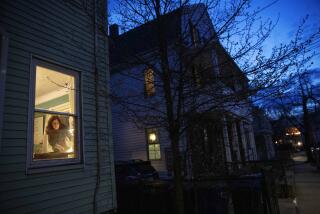CDC Moves to Ensure Surplus Flu Shots Aren’t Wasted
- Share via
The Centers for Disease Control and Prevention released 4.4 million doses of flu vaccine Thursday and all but withdrew its remaining restrictions on who could receive a flu shot -- moves designed to ensure that remaining vaccine stocks were not wasted.
The government had been gradually easing its vaccination restrictions as it became clear that a feared shortage of vaccine was becoming a surplus in much of the country. The CDC restrictions had reserved shots for the elderly, the chronically ill, young children and healthcare workers.
The current batch of vaccine must be used before the end of the flu season, which typically ends in March.
“The flu season is not over. It may not even have peaked,” CDC Director Dr. Julie Gerberding said at a news conference.
The agency did not revise its own vaccination guidelines, but rather endorsed the plans of individual states to lift all restrictions if they had a surplus. So far, at least 20 states, including California, have done that.
Gerberding said the CDC would release 3.1 million doses it had held in reserve, along with another 1.3 million doses left over from an allocation for children who were qualified to receive Medicaid benefits and had already been vaccinated.
She called the latest moves “extraordinary measures during a year of unprecedented supply-and-demand mismatches.”
Normal vaccination plans unraveled when Chiron Corp.’s vaccine production plant in Britain was shut down in October because of contamination. The plant was supposed to deliver more than 50 million doses, about half of the flu vaccine ordered by the U.S.
U.S. officials issued warnings about shortages, but a surplus developed because many people decided to forego a vaccination. This flu season also has been relatively light, although by mid-January, 24 states had reported significant outbreaks.
Nationwide, nearly 58 million doses of vaccine have been distributed, although the CDC could not provide details about how many have been used.
In California, at least 7 million doses have been distributed, compared with an estimated need of 10 million higher-risk individuals, said Dr. Robert Schechter, a medical officer with the Department of Health Services Immunization Branch.
More to Read
Sign up for Essential California
The most important California stories and recommendations in your inbox every morning.
You may occasionally receive promotional content from the Los Angeles Times.










